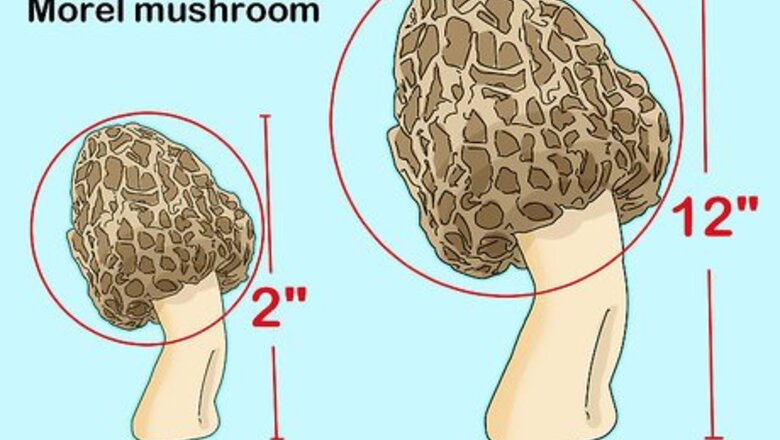
views
Looking for Edible Mushrooms
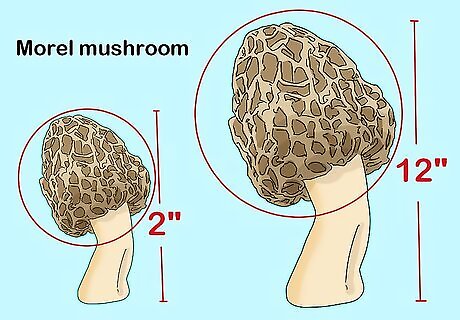
Spot a morel mushroom by its spongy cap. Morel mushrooms are known for their tall, sponge like caps. These caps can be a range of colors--from cream to almost black--and their caps resemble a honeycomb. They grow in a wide range of sizes: as small as 2 inches (5.1 cm) tall or a large as 12 inches (30 cm)! Hunt for morels in early spring, before the leaves have regrown on the trees. Look for morels near near ash, tulip, oak, hickory, sycamore, cottonwood, maple, beech, and apple trees. Avoid foraging in apple orchards, because morels absorb pesticides from the soil. Beware of false morels, which imitate the look of morel mushrooms. True morels will be hollow inside when sliced open; false morels will be fuzzy.
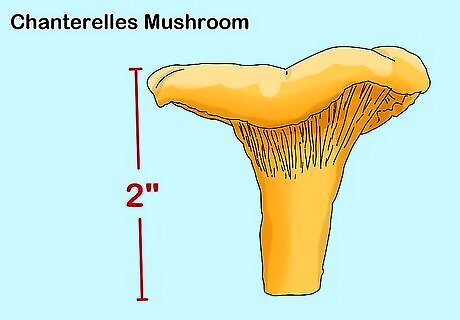
Recognize chanterelles by their bright yellow-orange color. Chanterelle mushrooms are among the easiest to spot on a walk in the woods. Each chanterelle is usually about 2 inches (5.1 cm) in diameter, but may be larger. Look for chanterelles in the summer or early fall, near conifers and hardwood trees. Beware of jack-o-lanterns, which are chanterelle look-alikes. There are two main differences to look for: Jack-o-lanterns have sharp, non-forking gills that move down the mushroom stalk. Chanterelles have blunt ridges on the cap that stop at the stem. The stem of a jack-o-lantern is orange inside when peeled. The interior of a true chanterelle stem is a pale peach color.
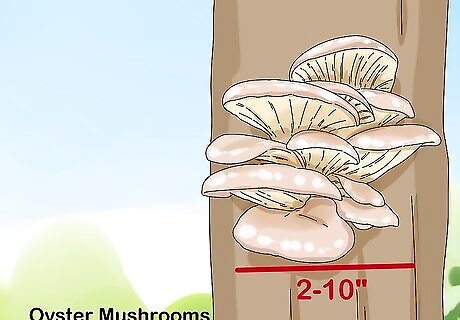
Identify oyster mushrooms growing in clusters. Oyster mushrooms grow in groups, and they are known for the scalloped look of their whitish-grey or tan caps. These mushrooms typically grow on dying hardwood trees, like oaks and maples. They commonly sprout up after an early autumn rain. Oyster clusters are usually 2–10 inches (5.1–25.4 cm) across. Oysters can grow in any season, but they prefer cool to cold conditions. Scrub your oyster mushrooms carefully before eating. Insects like to hide in their gills and stems.
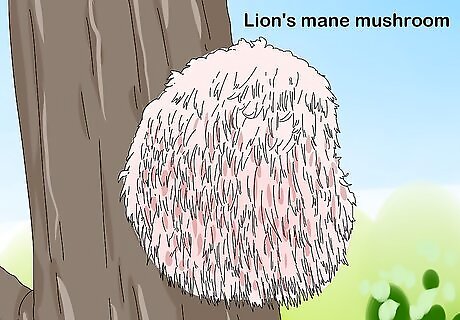
Recognize lion’s mane mushrooms for their pom poms. These mushrooms are known for their distinctive shape, which looks like the mane of a lion. This fluffy, round shape does not look like any other mushroom. Look for lion’s mane mushrooms on or near beech trees. Lion mane mushrooms can grow very high up in trees. They can found as high as 40 feet (12 m) off the ground. Look for these mushrooms on hardwood trees in the late summer or early fall. These mushrooms are typically about 4 inches (10 cm) across, or about the size of a fist.
Avoiding Poisonous Mushrooms
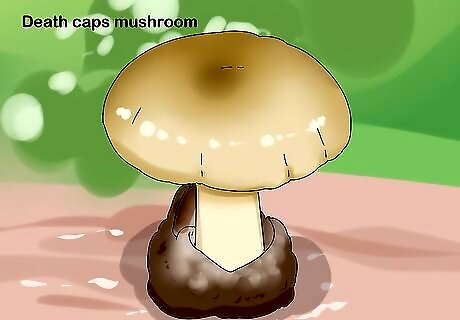
Identify death caps by their large caps. Death caps are highly poisonous mushrooms with 6 inches (15 cm) wide caps. These caps might be yellow, white, brownish, or greenish in color, and are generally sticky to the touch. Death cap mushrooms have white gills, and they grow on 5 inch (13 cm) tall stalks. The death cap is blamed for the most mushroom poisonings in the world. These mushrooms generally grow from September to November in the US and Europe.
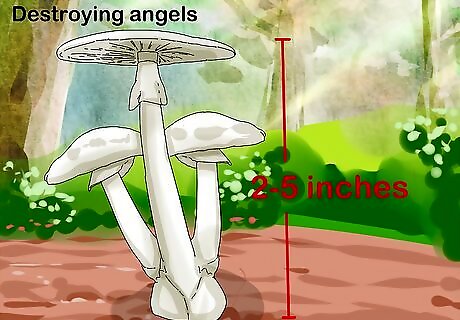
Recognize destroying angels by their white stalks and caps. Destroying angels are known for a wide cap, medium-sized stalk, and frilly gills. Destroying angel caps can be either pure white, or white at the edge and light yellow, light pink, or pale tan at the center. Destroying angels typically grow near the roots of trees or shrubs. They are most common in the summer and fall. They are typically about 2–5 inches (5.1–12.7 cm) across.
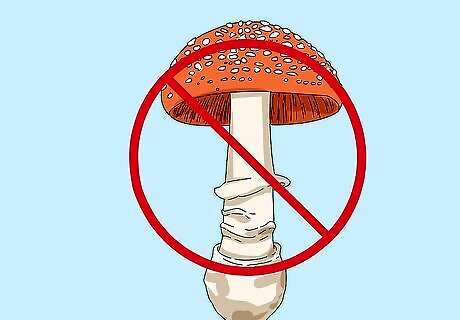
Avoid mushrooms with white gills and/or a volva. Death caps, destroying angels, and many other harmful mushrooms belong to the Amanita family of mushrooms. Although you may pass over some potentially edible mushroom, you can avoid the whole family by staying away from mushrooms with their particular characteristics. These include: White gills A skirt or ring on the stem A bulbous or sack-like base called a volva
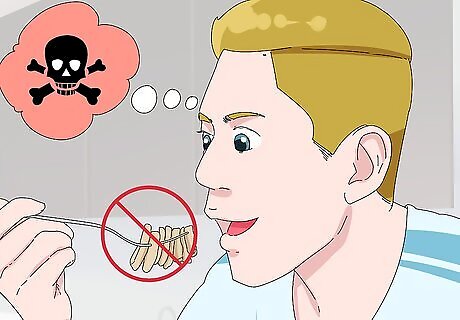
Never consume mushrooms you are not 100% sure about. As a good rule of thumb, never consume a mushroom until you have positively identified that species at least 3 times. Any time you are unsure about a mushroom, ask for advice from an expect.
Foraging for Mushrooms
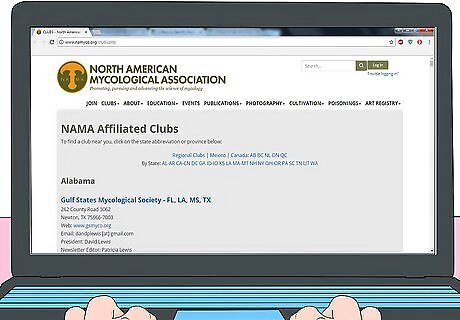
Join a mycology group. Before you go heading off to pick mushrooms in the forest, tag along with others who have done this before. See if you can find mycology group in your area, and go along on mushroom hunting expeditions. If you are in the United States, you can find a group by going here: http://www.namyco.org/clubs.php
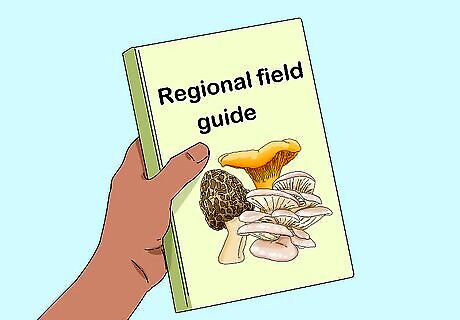
Purchase a regional field guide. Spend some time studying both the edible mushroom around you and the poisonous ones. Bring this field guide with you when you go out looking for mushrooms.
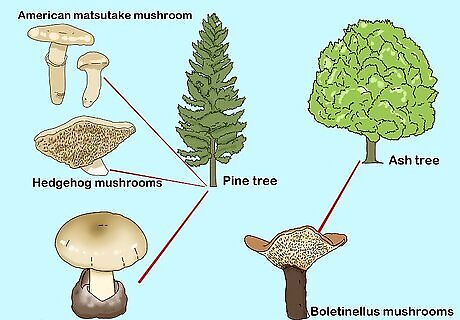
Identify local trees. Different kinds of mushrooms will grow near certain trees. If you can determine what kind of tree a mushroom is growing on, you have a better chance of correctly identifying the mushroom. Use a regional field guide to help you. For instance: Both hedgehog mushrooms and American matsutake mushrooms like to grow under pine trees. Boletinellus mushrooms prefer to grow near ash trees. Death caps like to grow under pines, oaks, and dogwoods.
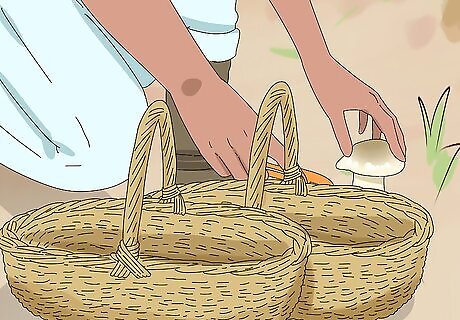
Take two baskets when foraging. When you go out into the woods to look for mushrooms, place mushrooms that you are certain are edible in one basket, and mushrooms you are unsure about in the other basket. Consult your field guide as you go.
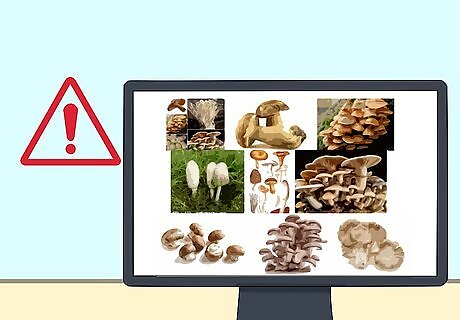
Avoid using interest images. Beware of search engine image results, as individuals may have uploaded an incorrect identification by mistake. If you have mushrooms that you are not sure about, consult your field guide, or ask a mycology expert.

















Comments
0 comment